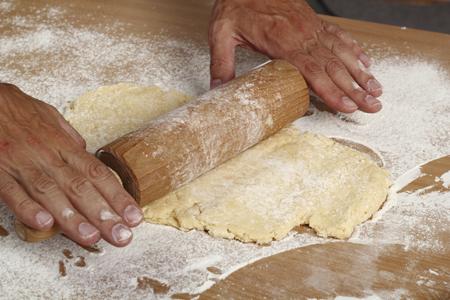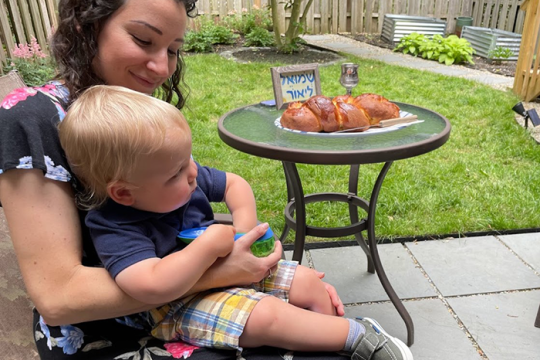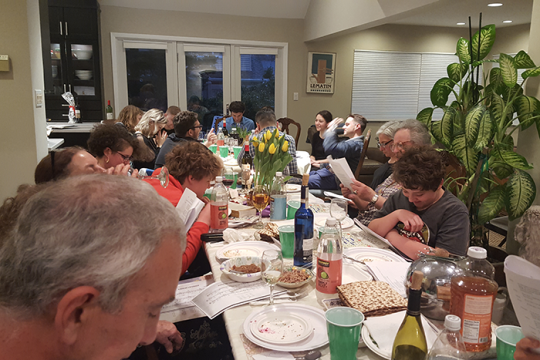
I just had the absolute pleasure of staffing a URJ Kesher trip to Israel as part of the Reform Movement's Taglit-Birthright program. The Birthright experience is a 10-day whirlwind of education and activity providing a “taste of Israel” to North American Jews (ages 18-26) who have never before visited Israel on a peer-educational trip. One of my goals as the madrichah (educational guide) on the trip was to present a Judaism that is meaningful and adaptable; something that has value for people at all stages of their life.
It was at one of our sites – in the ancient city of Tzipori - that I could visually see an “ah-ha!” moment occurring before my eyes for my trip participants, as I expanded the “real” and acceptable ways to “practice” Judaism. For some people, the “cultural aspects” of Judaism are sadly swept aside as a somewhat lesser form of Jewish practice. I explained – with pride and a full sense of validity – that I am a “Kitchen Jew.” Cooking, baking, sifting through cookbooks, shopping for the holidays, making crafts at the kitchen table, and cleaning my cabinets for Passover are very real ways I connect with my Jewish heritage.
Yes, I find fulfillment in prayer and study, but this is only one aspect of how I practice my Judaism. And, truth be told, these are more personal in nature for me. It is through reading and study that I delve deep into the layers of Jewish history and theology. Yet these Jewish practices feel grown-up, ones that I have come to love mostly as an adult. But Judaism is a total experience and I want it to be developmentally-appropriate to all members of my family. Many of the lessons I’ve gleaned about Judaism were from my mother and the hands-on, home-based activities we did together throughout my childhood. My childhood kitchen, perhaps, was a gateway to my adult life as a Jew. And now I am circling back – as our beautiful holidays allow us to do – to be a mother and teacher with my own children at my side.
There is not a Jewish holiday that comes around that I do not partially practice – and reinforce my own Jewish identity as a cultural Jew – in the kitchen. To me, Mordecai Kaplan was correct when he first stated in 1934 that “Judaism is more than a religion; it is an entire civilization. Not merely religious texts but also language, literature, and even arts and crafts are a part of it.” (Great Jewish Thinkers, Naomi Pasachoff, p. 188)
Kaplan taught that Jews would be drawn to new and exciting forms of Judaism that simultaneously retain “strong ties to the past”. Speaking as a “Kitchen Jew” — Purim provides wonderful opportunities to observe this holiday — in addition to making costumes, attending a Purim-spiel (a humorous play performed as part of the celebration of Purim), and buying multitudes of tickets so your children can play games at the Purim carnival. Not to put down these activities, for what is Purim without coming home from the Purim carnival with Ziploc bags of goldfish soon to be named Vashti and Esther? In my household, Purim has been the holiday in which I have taken something “traditional” and turned in on its head!
It has become the minhag (custom) in my house to make hamantaschen, but not the kinds you are certainly used to! For my children, no prune! No poppy seed! Instead, we have new and modern flavors to please even the youngest palate — peanut butter and jelly, Reese’s peanut butter cup, Skittles… you name it, we invent new yummy fillings each year! I break out my Hadassah cookbook and make batches of dough with my children. Though it takes our fingers a few tries to get things just right, we fold the dough into triangles in the shape of Haman’s funny hat and wait in anticipation as they bake, diving in right away blowing on their sweet insides so we can savor that first bite.
We make sure to bake enough to give away as presents to family, friends and neighbors. We make bags of mishloach manot, fulfilling the mitzvah of bequeathing gifts to our loved ones. Here is yet another tangible opportunity to teach our children the importance of demonstrating appreciation and saying todah (thanks) to various people in our lives. Our activity becomes an arts-and-crafts project and an act of g’milut chasadim (acts of loving kindness) rolled into one. Purim gives us an opportunity to observe the holiday at synagogue and at home, in both personal and public ways. Enjoy celebrating this Jewish holiday, fulfilling the many mitzvot Purim provides!
One more great resource for teaching the youngest members of your household, or those young at heart, about Purim: visit G-dcast.com for a modern-telling of the Purim story.
My seven-year old gave this video a “thumbs up” saying “I love that Esther was telling the story!”
For more information about visiting Israel on a Taglit-Birthright Israel trip, please visit gokesher.org.
Related Posts

Harnessing the Power of our Mothers Around the Seder Table

Melding Tradition and Innovation: Our Interfaith Toddler Naming Ceremony


